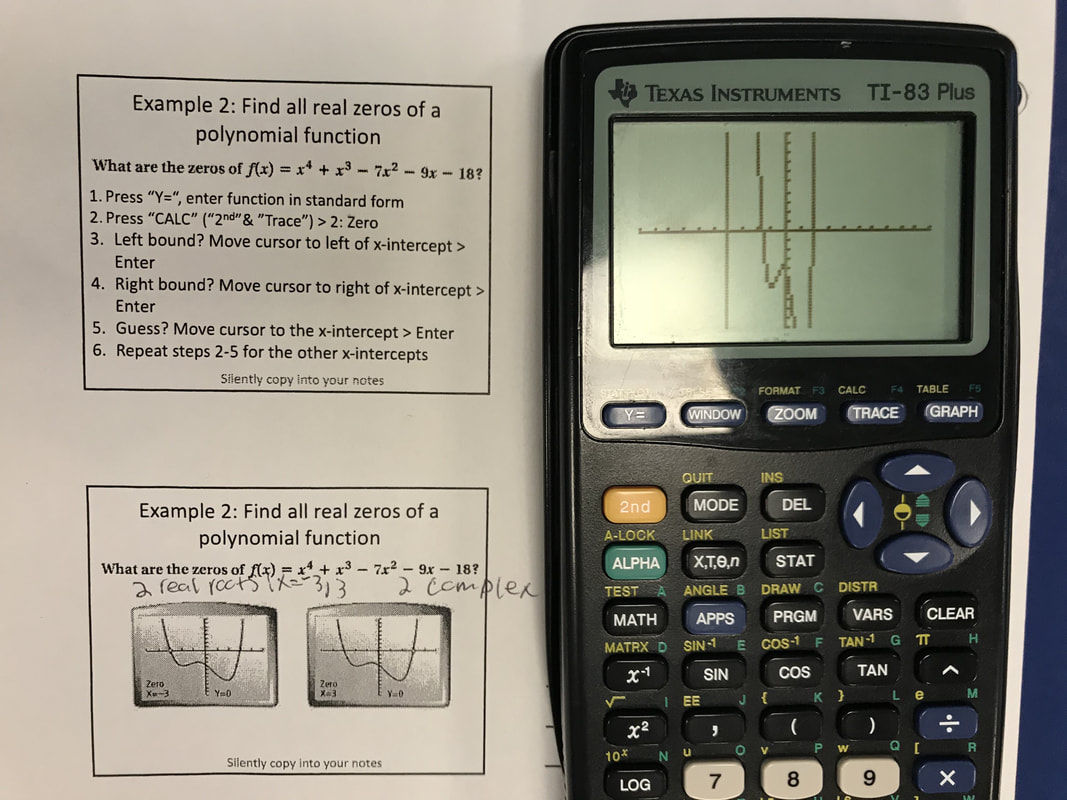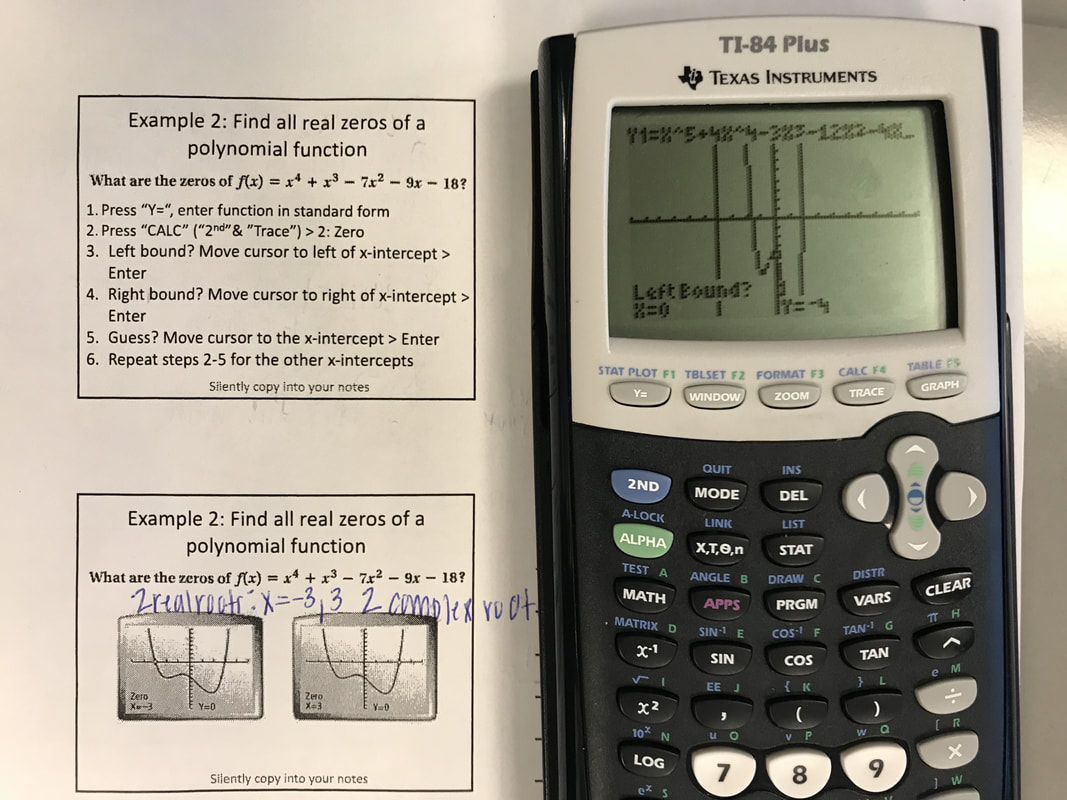Note-Taking Strategies
NOTE-TAKING STRATEGIES OVERVIEW
My students are no more than two years away from attending college, so it is a priority for them to develop excellent note-taking strategies. My goal is for students to develop skills such as annotating text, rewording vocabulary, summarizing verbal and written key points, and organizing mathematical thinking. I expose my students to notes that follow a PowerPoint presentation format, because the format is highly used in university settings. I model note-taking and use positive narration, circulation, and scaffolded questions to engage students.
After exploring key terms and concepts, I use a gradual release model to engage my students in example problems. My students first actively observe and participate in an example that I model solving on the board. Then, students work as a whole class to solve a similar, but less scaffolded problem, which I call a "You Try". The You Try is led by several students who solve the problem on the board. Next, students work independently for 8 minutes on the classwork, in order to self-assess how much they know. Finally, students work with their desk partners for 10 minutes to complete the classwork. During this time, I am also circulating the classroom to help students in small groups and individually.
There are a tremendous number of intersections between mathematics and technology, so I integrate technology into every lesson in my Algebra II curriculum. We frequently use videos, online activities, games, and surveys to enhance instruction and practice real-world applications. In addition, graphing calculators are a primary method of technology integration in my classroom. At the beginning of the school year, I communicate to parents and guardians via a paper newsletter that their child is required to bring a graphing calculator to class each day. I explicitly teach students how to use their graphing calculators by engaging them in calculator exploration activities and showing them specific calculator techniques through a document camera.
Please scroll down or click on the table of contents below to learn more about my guided notes, gradual release model, and integrated technology.
TABLE OF CONTENTS
Guided Notes
Gradual Release Model
Integrated Technology
My students are no more than two years away from attending college, so it is a priority for them to develop excellent note-taking strategies. My goal is for students to develop skills such as annotating text, rewording vocabulary, summarizing verbal and written key points, and organizing mathematical thinking. I expose my students to notes that follow a PowerPoint presentation format, because the format is highly used in university settings. I model note-taking and use positive narration, circulation, and scaffolded questions to engage students.
After exploring key terms and concepts, I use a gradual release model to engage my students in example problems. My students first actively observe and participate in an example that I model solving on the board. Then, students work as a whole class to solve a similar, but less scaffolded problem, which I call a "You Try". The You Try is led by several students who solve the problem on the board. Next, students work independently for 8 minutes on the classwork, in order to self-assess how much they know. Finally, students work with their desk partners for 10 minutes to complete the classwork. During this time, I am also circulating the classroom to help students in small groups and individually.
There are a tremendous number of intersections between mathematics and technology, so I integrate technology into every lesson in my Algebra II curriculum. We frequently use videos, online activities, games, and surveys to enhance instruction and practice real-world applications. In addition, graphing calculators are a primary method of technology integration in my classroom. At the beginning of the school year, I communicate to parents and guardians via a paper newsletter that their child is required to bring a graphing calculator to class each day. I explicitly teach students how to use their graphing calculators by engaging them in calculator exploration activities and showing them specific calculator techniques through a document camera.
Please scroll down or click on the table of contents below to learn more about my guided notes, gradual release model, and integrated technology.
TABLE OF CONTENTS
Guided Notes
Gradual Release Model
Integrated Technology


